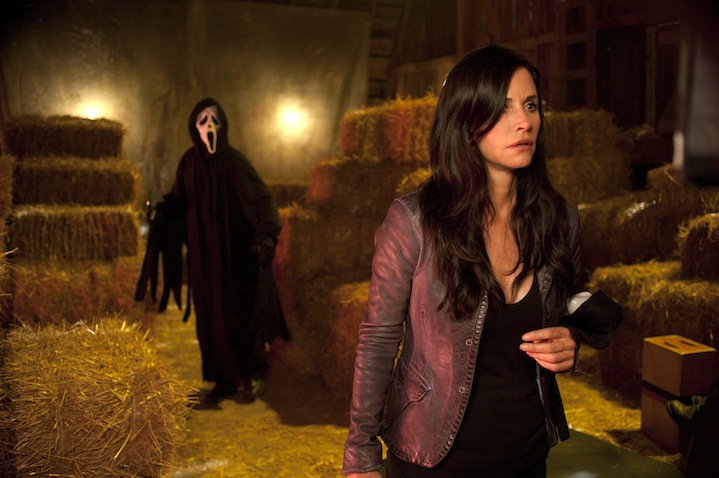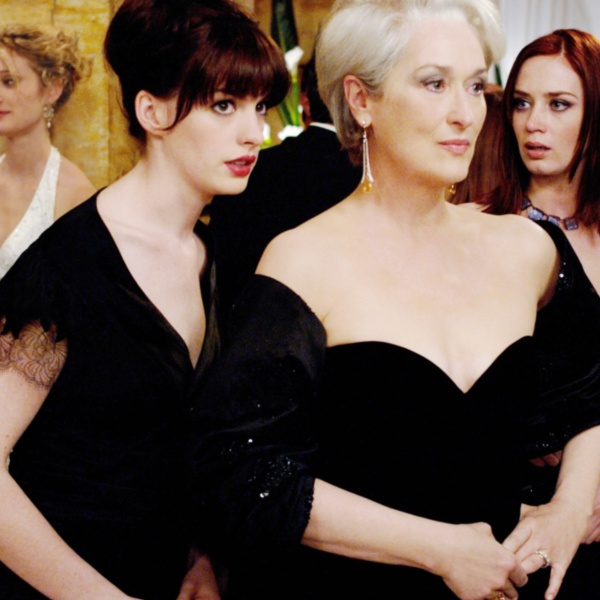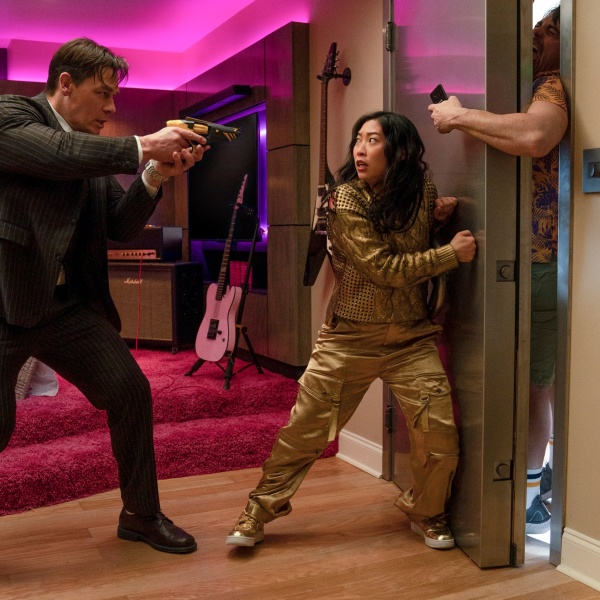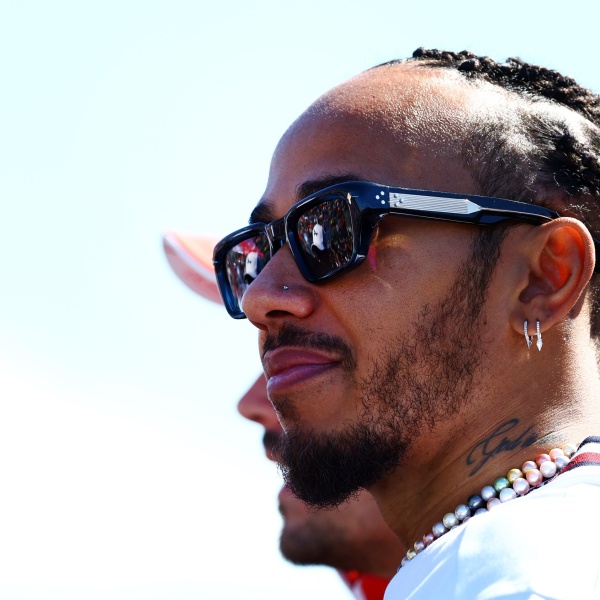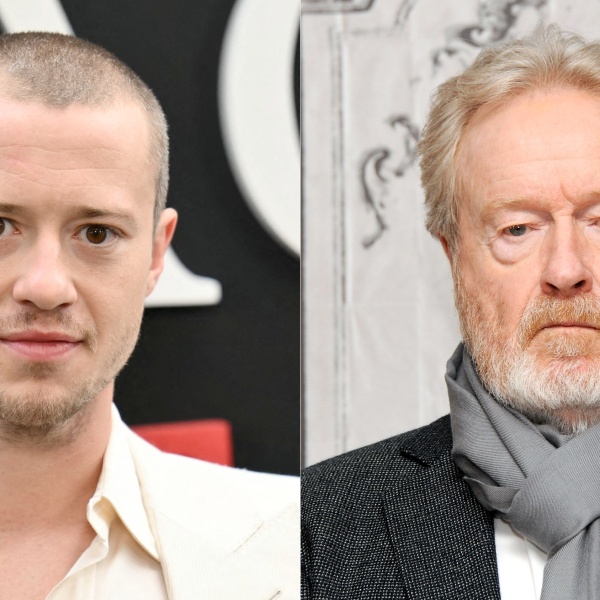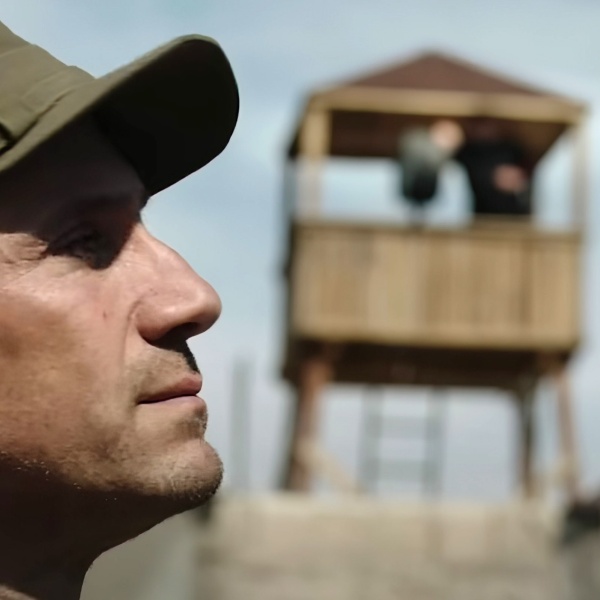If it’s one thing that horror movies are good at, particularly in the past decade with our annual “Saw” installments, it’s churning out sequels – like this weekend’s not-very-good “Scream 4.” (To quote “Scream 2” — “Sequels suck, they are, by definition, inferior product.”) While most of these movies are blatant cash-grabs by studios that know the relative inexpensiveness of the films can boost their bottom line, there are a few that exceed our admittedly low expectations. But a feature called “Horror Sequels That Exceed Our Admittedly Low Expectations” would have kind of been a mouthful, so we went with the above instead. And given those set of rules, we decided to forgo grading the films, instead letting the writing speak for itself.
The good thing, of course, about horror sequels, which almost always have lower budgets than their predecessors, is that they are occasionally riskier – with such little cash up front they can afford to take chances creatively. Not that horror sequels are known for their artfulness, but we think we’ve wrangled up a bunch that, if not worthy of placement in canonical film lore, try things differently and don’t completely shame the original. Some are even, dare we say it, bloody good?
 “Aliens” (1986)
“Aliens” (1986)
To call this film a masterpiece is to simply restate what’s already been said. James Cameron’s sequel to Ridley Scott’s classic is commonly agreed upon as one of the best sequels ever made, right up there with “The Godfather Part II” and “The Empire Strikes Back,” and a textbook example of how to continue a story. Not simply a rehash of what came before, this sequel enriches the world of the characters (introducing the Queen Alien) and assembles a terrific ensemble cast (including Michael Biehn, Bill Paxton and Lance Henricksen, among others). And like those aforementioned films, this is the installment where the lead, Sigourney Weaver, in an Oscar nominated performance, becomes a total badass. Though not a straight-ahead horror film like the original, Cameron still manages to include some real scares among the action. The opening act of the film is an exercise in restraint; besides a dream sequence the alien doesn’t make an appearance until almost an hour in (truly remarkable, especially for a sequel). This gives the film a chance to establish all the new characters, so that the tension is nearly unbearable when all hell finally breaks loose. One of the best action films of all time is a sequel to one of the best horror films of all time — only Cameron could pull something like this off.
 “Blade II” (2002)
“Blade II” (2002)
The first “Blade,” with its innumerable stylistic embellishments (many of them both resembling and predating similar moments in “The Matrix”) and comic book origins, was more of a superhero action movie that happened to feature a whole bunch of vampires. With the sequel, newly installed director Guillermo del Toro wanted instead to put some scariness in there along with all the automatic weapons and karate chops to the forehead. Along those lines he equipped the sequel with an even nastier villain – the Reapers, a strain of super-vampire led by Luke Goss, who have mouths that open up, with a flourish of vaginal imagery, to reveal a razor-lined maw. Del Toro also gives Blade (Wesley Snipes, again) a “Dirty Dozen”-ish band of vampires to interact with (among them: Ron Perlman and Donnie Yen). The resulting film is richer in character and detail, with del Toro’s fantastical tableaus popping like particularly beautiful panels off a comic book page. Oh, and it was scary too.
 “Bride of Chucky” (1998)
“Bride of Chucky” (1998)
Of all the postmodern son-of-“Scream” rip-offs that trailed Wes Craven’s groundbreaker, few reached the giddy peaks of “Bride of Chucky,” which re-envisioned the murderous doll (again: Brad Dourif) as one half of a rubbery Mickey and Mallory, trading the cramped claustrophobia of the earlier films for more wide-opened goofiness. (The other half of the dynamic duo is Jennifer Tilly, in her greatest post-“Bound” role, first as a human and then as an impish, sexed-up plaything.) References abound (the best, a “Hellraiser” gag comes after co-star John Ritter meets a gruesome end), lending the movie a buoyant energy and director Ronny Yu creates dreamlike imagery that often borders on the surreal. While it wasn’t enough to fully resuscitate the franchise (there was one more, even stranger film, “Seed of Chucky”) but it was enough of a howler to make you care about a series that you had probably forgotten about in the first place.
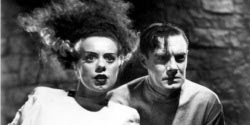 “Bride of Frankenstein” (1935)
“Bride of Frankenstein” (1935)
It’s extremely rare for a sequel to a classic film not only to live up to but actually surpass the original, and “Bride of Frankenstein” does just that. Though the story picks up just moments after the original, it took Universal nearly four years to get director James Whale to agree to return to helm the film. Unlike the first film, which scared the pants off audiences in 1931, Whale delivers a movie that is more comedy (and tragedy) than horror. But it was so good, audiences didn’t seem to mind the bait-and-switch. Though it was released just a few short years after the original “Frankenstein,” the film feels considerably more modern, with Franz Waxman’s score laying under the scenes (where there had previously been only dialogue). Boris Karloff returns as the Frankenstein monster, now portrayed more as a tragically misunderstood creature and less of a rampaging killer. Elsa Lanchester plays the Bride, and also appears as author Mary Shelley in the film’s storytelling prologue — though she is onscreen for less than three minutes she’s one of the most unforgettable images in film history. Quite a feat.
 “Dawn of the Dead” (1978)
“Dawn of the Dead” (1978)
Pitched somewhere between the death of ’70s idealism and the rise of Reagan‘s ’80s, “Dawn of the Dead” was another one of those counterculture warning signs that the mainstream didn’t heed, a point further driven home by a post-millennial remake that seemed hellbent on annihilating the necessary subtext. Something of a loose sequel to George Romero’s previous “Night of the Living Dead,” ‘Dawn’ finds four innocents at the precipice of the apocalypse, fleeing from braindead zombies in the most obvious place you’d find them: a shopping mall. Romero’s protagonists are a tad ugly and fueled by petty jealousies and insecurities, but more so than other works in his underrated filmography, they resonate as disparate souls; real people trying to come to grips with the fact they may be polishing silverware on the Titanic. Funny and ultimately sobering, “Dawn of the Dead” may be the alpha and omega of zombie pictures, and one of the last great pictures of the ’70s.
 “The Devil’s Rejects” (2005)
“The Devil’s Rejects” (2005)
While 2003’s “House of 1000 Corpses,” Rob Zombie’s first feature and foray in to the sadistic Firefly family, has its moments, this writer found it to be a rather schlocky, too-over-the-top horror movie. Seeing “The Devil’s Rejects” two years later was something of a revelation: could this be the same Rob Zombie? Indeed, it was. And the rocker-turned-filmmaker was smart with his sequel. He stripped it down, got a lower budget and made a modern horror movie classic. Making the Firefly family the protagonists this time (headed by a brilliantly disturbing and hilarious turn by Sid Haig as Captain Spaulding) as they evade Sheriff Wydell (William Forsythe), in what turns out to be a nasty, albeit incredibly entertaining road movie. If you’re a horror fan, what’s not to love here? Bill Moseley’s brilliant turn as Otis; Zombie managing to humanize the Fireflys; the ace opening titles playing alongside “Midnight Rider”; and of course, the hilarious chicken fucking scene. It’s disturbing, scary, and funny — everything is bettered in this sequel, and “The Devil’s Rejects” stands alone as a great genre title.
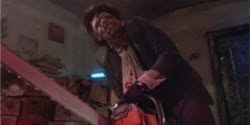 “Texas Chainsaw Massacre 2” (1986)
“Texas Chainsaw Massacre 2” (1986)
No one could have been prepared for the sudden right turn Tobe Hooper was intent on taking by revisiting the bloodthirsty Sawyers in the ’80s. While the first film, Hooper’s rookie picture, emphasized the horror of a group of cannibals forgotten in the wilderness of the ’70s counterculture movement, Hooper brings them into the limelight in the ’80s, refashioning them as sickos enjoying the spoils of a crooked economy by packaging and selling the same corpses they defiled as food for the masses. Sounds like somebody voted for Reagan! Hooper allows his cast to camp it up and chew all the scenery, resulting in a film that is so loud and colorful it borders on the obnoxious, a tactic that surely influenced a young Rob Zombie. But it’s worth noting that both ‘Chainsaw’ films are distinctly products of their environment, the subtext of this picture about the symptoms in lieu of the disease as opposed to the sickening theatrics of the preceding picture. Also, Dennis Hopper wields two chainsaws.
 “Evil Dead 2: Dead By Dawn” (1987)
“Evil Dead 2: Dead By Dawn” (1987)
In 1981, 22-year-old filmmaker Sam Raimi and his pals went off into the woods armed with a small budget (raised mostly from family friends) to make “the ultimate experience in grueling terror” and came back with a horror classic. But after the failure of Raimi’s next film (the Coen Brothers co-scripted screwball comedy “Crimewave”), it was back to square one. “Evil Dead 2” is essentially a bigger budget (though still a modest $3.6 million) remake of the original film where everything is pushed to 11. (The opening actually recaps the previous film in streamlined fashion.) Despite this previously covered ground, the sequel is a true original: a completely relentless film that’s part splatter horror and part “Three Stooges” short. It features a tour-de-force performance from Bruce Campbell, who spends about half the film by himself, and makes Ash into one of the most memorable characters in horror history. Coupled with the original, they’re really unlike any movies that had come before them and though several have tried (including Raimi himself with “Drag Me To Hell”), unlike any movie since. Though the original and third installment “Army of Darkness” both hold a special place in our hearts, this is the definitive film of the trilogy and arguably the best horror comedy of all time.
 “The Exorcist III“ (1990)
“The Exorcist III“ (1990)
Based off a non-‘Exorcist’ story from original author William Peter Blatty (originally titled “Legion”), this once-lambasted sequel certainly carries the stink of a film artificially grafted onto a pre-existing franchise. Which is why it’s such a surprise that the end product is fairly chilling, a supernatural story about a lieutenant investigating a serial killer imitating the murders of the Gemini Killer, a madman who’s been dead for 15 years. It takes a major leap of faith to accept that Father Karras survived the events of the first film, but Jason Miller, reprising his role, is absolutely magnetic in a film that also showcases superb work from George C. Scott as the investigator and a typically possessed turn from the underestimated Brad Dourif. Blatty, who had previously directed “The Ninth Configuration,” sets most of the action inside a mental institution (something of a horror sequel staple), and maintains an icky, eerie curiosity about the many corners and ceilings of the hospital, resulting in a few spectacular scares, and the queasy suggestion that this is a place that could use more than a few exorcisms.
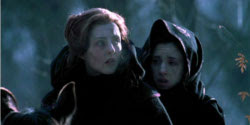 “Ginger Snaps Back: The Beginning” (2004)
“Ginger Snaps Back: The Beginning” (2004)
While the first “Ginger Snaps,” a Canadian feminist werewolf movie that made instant fans out of anyone who watched it, was barely released or recognized in the U.S. (it went direct-to-video, complete with inglorious full-screen transfer), it made enough of a splash in its native land for two sequels to be commissioned. The first, “Ginger Snaps Unleashed,” was a meditative affair that wondered “What if “Girl, Interrupted” had werewolves?” But the real juice was saved for the third film, “Ginger Snaps Back,” which didn’t even receive theatrical distribution in Canada. The third film was set in the 19th Century in a Canadian settlement that also, predictably, is plagued by werewolves. We loved the old-timey outpost setting (it reminded us of another underrated horror gem: Antonia Bird’s “Ravenous”), but most of all the fact that the feminist subtext translated so well. No matter the period, the curse remained the same.
 “Gremlins 2: The New Batch” (1990)
“Gremlins 2: The New Batch” (1990)
Whatever people were expecting the follow-up to Joe Dante and Steven Spielberg’s cuddly/scary “Gremlins” would be, it most certainly was not the franchise-derailing, batshit gonzo “Gremlins 2: The New Batch.” Armed with a complete creative free reign that Warner Bros. would soon regret, Dante went hog wild, crafting a living, breathing WB-like cartoon while at the same time lampooning the vices and obsessions of the early ’90s (cable television, frozen yogurt, Donald Trump). The result is, as the director himself has said, “one of the most unconventional studio pictures ever,” and it also pretty much killed off what could have been a successful franchise because it was so so damn meta and bizarro for its time (to some extent it was the beginning of the end of Dante’s up-til-then highly successful career). Just think about how there’s an animated segment that starts the film, an extended cameo by critic Leonard Maltin talking about how much he hated the first “Gremlins,” a moment where the “film” burns out and Hulk Hogan derides the theater management, and reflexive dialogue about how the “rules” of the first film make no sense. And this is all stuff that doesn’t involve the slimy gremlins, which this time around include one that talks like Tony Randall and one that has a sex change! Of course the picture was a huge bomb (its budget was triple the original), not even making a third of what the first film grossed. Still, it’s sublime, surrealist silliness and one of the strangest off-kilter sequels to a huge mainstream hit ever.
 “Hellbound: Hellraiser II” (1988)
“Hellbound: Hellraiser II” (1988)
The deck is stacked immediately against “Hellraiser II,” which begins right after the events of the first film, a singular effort in the horror genre featuring a rogue’s gallery shrouded in distinct mystery. Once “Hellraiser II” deigns to be a film that expands the world of Hell into a tangible dimension one can visit, it’s hard not to be skeptical. But ‘Hellbound’ ends up upping the intensity and imagination of the first film, toning down the sickening eroticism and replacing them with the morbid murderous curiosities of how we perceive our personal hells. As Kristy recoils in a mental institution (there we go again…), she realizes the twisted cenobites have been called back into her periphery by a curious doctor who seeks the power of their enchanted puzzle box. ‘Hellbound’ seems fixated more on the limits of fantasy horror rather than the torture porn-y appeal of the first effort, but in developing this alternate angle, it becomes a completely separate effort from its predecessor, less grotesquely kinky but more volatile and unpredictable than a horror sequel should be.
 “A Nightmare On Elm Street 3: The Dream Warriors” (1987)
“A Nightmare On Elm Street 3: The Dream Warriors” (1987)
After the success of the first film, New Line Cinema plowed ahead without creator Wes Craven, rushing out the awful “A Nightmare On Elm Street 2: Freddy’s Revenge” (completely oblivious that they had just made a film about repressed homosexuality). Craven was brought back along with a then-unknown Frank Darabont and director/co-writer Chuck Russell to co-write a third installment. Together they created the chapter that comes closest to the spirit of the first film, while doing the best job of expanding on those ideas. The story involves Freddy Krueger returning to terrorize a group of troubled teens in a psychiatric ward and delves a bit more into his mythology (“the bastard son of 1000 maniacs”). While the teens here are too thinly drawn for you to really care about them, this is the film where Krueger becomes a fully-fleshed out character with the sadistic wit that would make him the most memorable horror villain of the past two decades. When actor Robert Englund improvised the line “Welcome to prime time bitch!” Freddy’s fate was sealed as a monster you could cheer for and not the dark vision of terror Wes Craven had originally created. The film does contain the best Freddy one-liners, some inventive and truly surreal dream sequences and a dreamy Angelo Badalamenti score. While not as good as the original, it’s the only worthwhile sequel in the series (until ‘New Nightmare’) and the only one with Craven’s involvement.
 “Phantasm II” (1988)
“Phantasm II” (1988)
Taking off where the first “Phantasm” left off, this gonzo horror fantasy expands hugely on the no-budget original, telling a story that retains the eerie dream-like storytelling of the first film while also widening the galactic canvas of the mythology. In this installment, young Mike has grown up and, now released from a mental institution, is determined to stop the ghastly Tall Man from stealing corpses and using the bodies to fuel his intergalactic expansion. This, naturally, requires some firepower, so while the low-key first film focused on Mike being stalked, he is now the aggressor, taking on the open-road with balding would-be ice cream-slinging badass Reggie and actively hunting for this supernatural slimer who probably sees it coming. “Phantasm II” is filled with several inventive setups and action sequences, with a debt to the visual kineticism of Sam Raimi’s work, suggesting series creator Don Coscarelli has also spent his time between ‘Phantasm’ films (nine years) grabbing inspiration from many contemporaries.
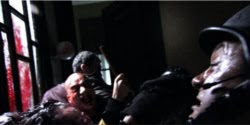 “[Rec 2]” (2009)
“[Rec 2]” (2009)
The original “[Rec]” is a taut, well-made horror film that works despite its obvious unoriginality. Spanish directors Jaume Balagueró and Paco Plaza took many familiar elements from horror films — zombies, abandoned buildings, darkly-lit rooms and even the found footage aesthetic — but the film worked for many reasons: they managed to create a plausible scenario in which a person would continue to shoot video in the scenario (always an issue in these films); the pace of the film is relentless; the gore and makeup work is top notch; and the film is genuinely intense and scary (especially the final 10 minutes). The sequel starts immediately after the end of the first film, with a SWAT team going in to the quarantined building to fight those nasty, infected zombies. This time we see the events through video cameras strapped to the officers, and the overall result is a sequel that not only matches the original, but deepens the mythology. Essentially, the two films work as one terrifying three-hour film. Suddenly, what began as a zombie story now takes on elements of demonic possession. “[Rec] 2” continues the series’ trend of mash-up horror, this time it’s “Aliens” meets “The Exorcist.” The ending nicely ties up loose threads from the first film, and leaves you wanting more.
 “Psycho II/III/IV” (1983/1986/1990)
“Psycho II/III/IV” (1983/1986/1990)
It seems scurrilously sacrilegious to even mention the sequels to Alfred Hitchcock‘s incomparable 1960 classic “Psycho,” and even more objectionable to suggest that they might not be half bad. But the thing is that the sequels are quite good, with each one of them offering different (and compelling) reasons to place them alongside the granddaddy of the slasher film. 1983’s “Psycho II,” directed by underrated Australian auteur Richard Franklin, is the most “straight” sequel of the bunch, dealing with Anthony Perkins‘ mama’s boy Norman Bates being released from prison. A classical whodunit, it still bristles with technical virtuosity and the fun of seeing Perkins and original cast member Vera Miles back on screen (the Jerry Goldsmith score is great, too). “Psycho III” (1986) directed by Perkins himself, is a more down-and-dirty affair, featuring a particularly skuzzy Jeff Fahey performance, an early Carter Burwell score and gorgeous, stage-inspired directorial flourishes (watch as the light peeking out from the bottom of a door becomes the shimmer on a knife’s blade). Even “Psycho IV” (1990), which aired on Showtime along with the disastrous “Birds II: Land’s End,” is pretty fun, directed by frequent Stephen King adapter Mick Garris from a script by original “Psycho” scribe Joseph Stefano. Its subtitle is “The Beginning” and it’s one of the rare sequels, which folds in elements of a prequel, in which giving more stuff away doesn’t ruin the mystery. While these sequels don’t hold a blood-spattered candle to the original, they also don’t deserve to be locked away in the cellar with Mrs. Bates either.
 “Candyman: Farewell to the Flesh” (1995)
“Candyman: Farewell to the Flesh” (1995)
If you’re wondering why the Oscar-nominated filmmaker behind “Kinsey,” “Chicago,” and “Dreamgirls” is taking on the two-part capper to the “Twilight” saga, dig into Bill Condon‘s filmography and things will make a little more sense. Chiefly, Condon directed this elegantly told “Candyman” sequel three years before his “serious” splash with “Gods and Monsters.” Mostly ignoring the events of the first film, it has the good sense to keep Tony Todd as the titular boogeyman, who has a hook for a hand, a close relationship with bees, and can be summoned from the great beyond by saying his name five times into a mirror. Spooky. But what’s so striking about the sequel is the treatment of the Candyman; his screen time is limited and his backstory is emphasized while a more traditional murder mystery takes center stage. It’s a strange and haunting sequel (Philip Glass‘ music certainly helps in this regard), emphasizing weirdness over excessive more-of-the-same theatrics.
 “The Curse of the Cat People” (1944)
“The Curse of the Cat People” (1944)
RKO‘s 1942 horror film “Cat People” is fondly remembered for its invention of the horror technique “bus” (wherein the director slowly builds suspense only to end with an anti-climactic “boo!”), but looking like it has little to offer other than a collection of mundane talky scenes that seem to be less about scares and more about chummy mugs and cigarettes. Still, if it wasn’t for the original, there would be no “The Curse of the Cat People,” the studio’s quick sequel that is leaps and bounds more successful than its predecessor. Returning are Oliver and Alice (Kevin Smith and Jane Randolph), now happily married and with six-year-old daughter Amy, a reclusive girl who spends too much time pretending and too little being social. This behavior leads to her befriending the dead Irena (Simone Simon), also known as the “cat person” from the initial outing and her father’s former wife. If that’s not conflict, we don’t know what is. The picture is low on frights but high on moody atmosphere, with the recycling of the “Magnificent Ambersons” set definitely lending a hand to the dark, often sinister tone. Even the script has more smarts than you’d think, questioning the line between harmful and innocent imagination and the responsibility of a parent for a child’s flawed behavior (for instance, nobody goes to Amy’s birthday party because she dropped the letters off in a tree — which, years ago, her Dad told her was a magical mailbox). Though it has most of the same characters, you’re better off skipping the first and getting right to the good stuff.
—Drew Taylor, Cory Everett, Gabe Toro, Erik McClanahan, Christopher Bell
